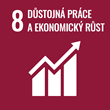Informace o projektu
Vulnerability of Economic Sectors: The Impact of Climate Change
- Kód projektu
- MUNI/R/1304/2023
- Období řešení
- 1/2024 - 12/2025
- Investor / Programový rámec / typ projektu
-
Masarykova univerzita
- Grantová agentura MU
- CAREER RESTART
- Fakulta / Pracoviště MU
- Ekonomicko-správní fakulta
The research will focus on individual equity securities traded in North America and Europe or in other countries of significant economic importance (such as Japan, Australia, China, and India, depending on data availability). The outcome of the empirical analysis will be an estimation of the vulnerability level of individual companies in response to climate change. Vulnerability will be assessed by examining how stock price fluctuations or extreme negative returns respond to variations in interest (attention) and sentiment concerning direct physical and transitional climate risks. To measure the price fluctuations of stocks, I will employ the HAR (heterogenous autoregressive) model and its modifications (HAR-SJ model). In addition to modeling asset price fluctuations, I would like to calculate extreme negative returns, referred to as value-at-risk (VaR) and expected shortfall (ES). This framework also considers quantile regression models (HAR-Q model) and models minimizing the loss function. In the context of this research, I will be able to answer whether the attention and sentiment related to climate change exacerbates the extremely negative returns of specific companies. This is an area with limited publications, and it is necessary to fill this gap in the literature.
Key research objectives:
- Investigate the relationship between the level of attention from the general and professional populations regarding climate change news and the development of market risks, measured by the fluctuation of asset prices (volatility) and extreme negative returns (VaR and ES).
- Identify companies (industries) perceived (by investors) as sensitive to climate risks.
- Diagnose whether the vulnerability is concentrated in some industry country, depends on the company size, etc.
- Identify whether the vulnerability of the examined companies is higher in times of greater uncertainty.
- Analyze whether vulnerability changes over time.
Cíle udržitelného rozvoje
Masarykova univerzita se hlásí k cílům udržitelného rozvoje OSN, jejichž záměrem je do roku 2030 zlepšit podmínky a kvalitu života na naší planetě.
Publikace
Počet publikací: 1
2025
-
Do hurricanes cause storm on the stock market? The case of US energy companies
International Review of Financial Analysis, rok: 2025, ročník: 97, vydání: January, DOI

